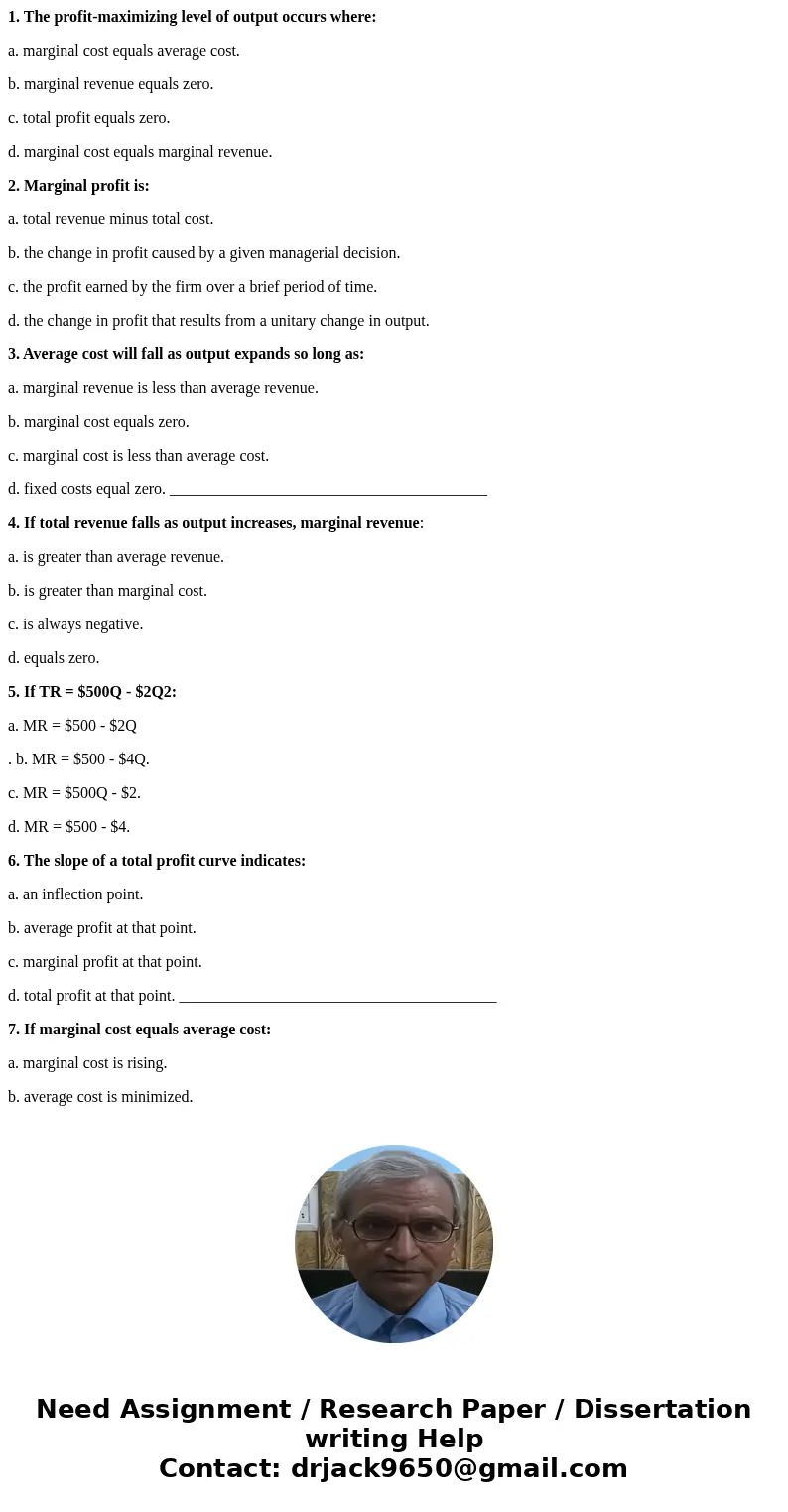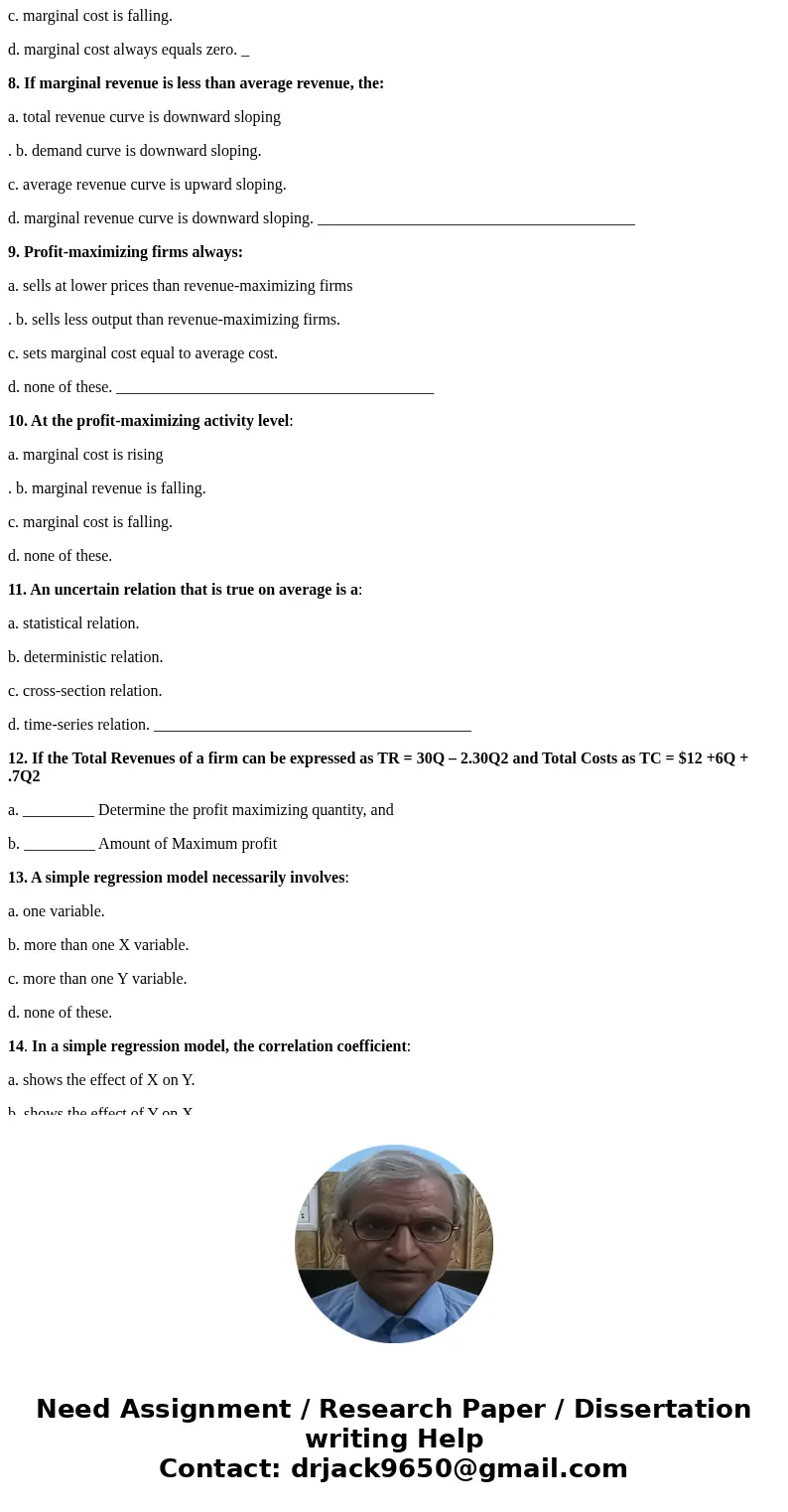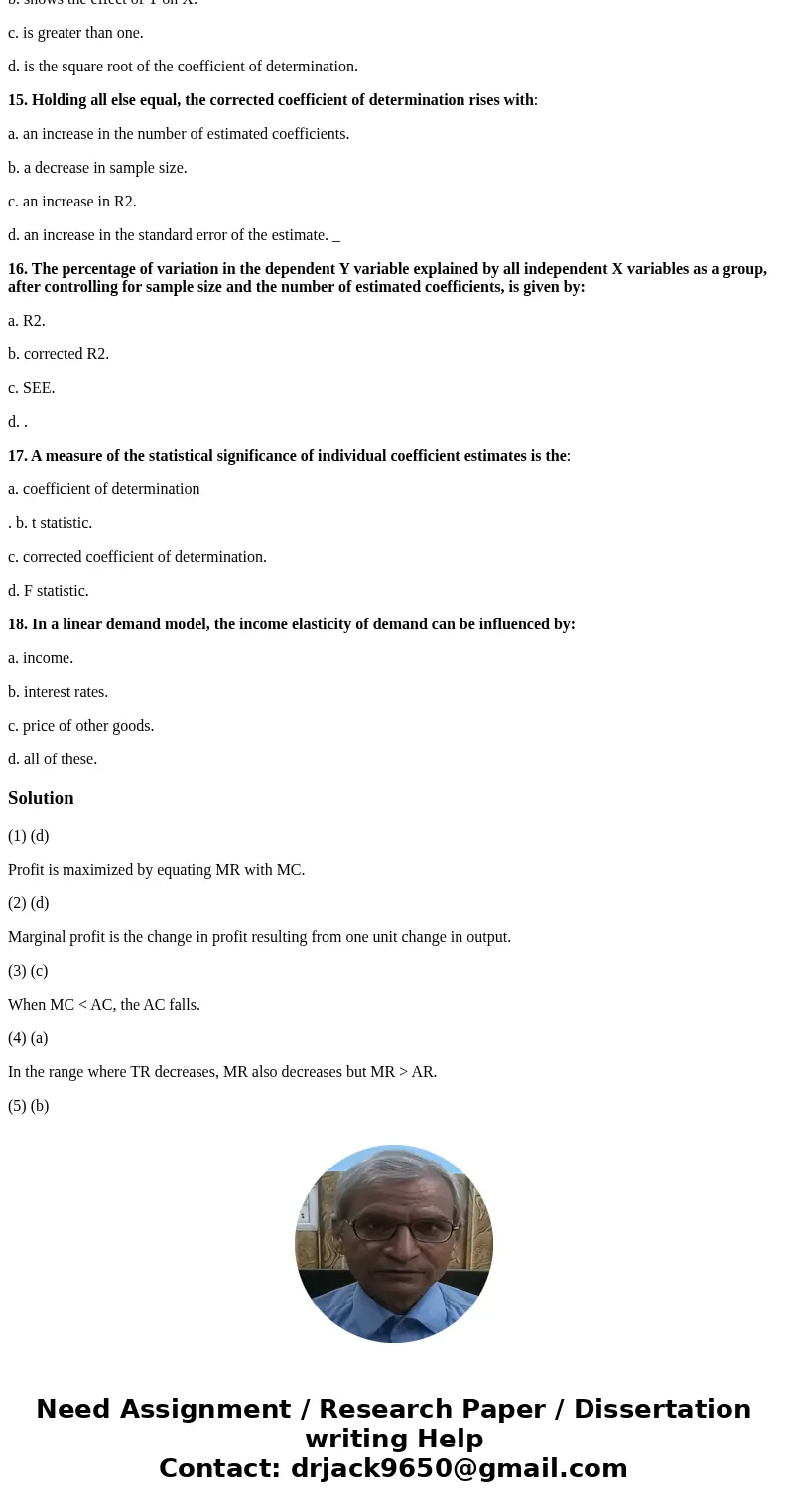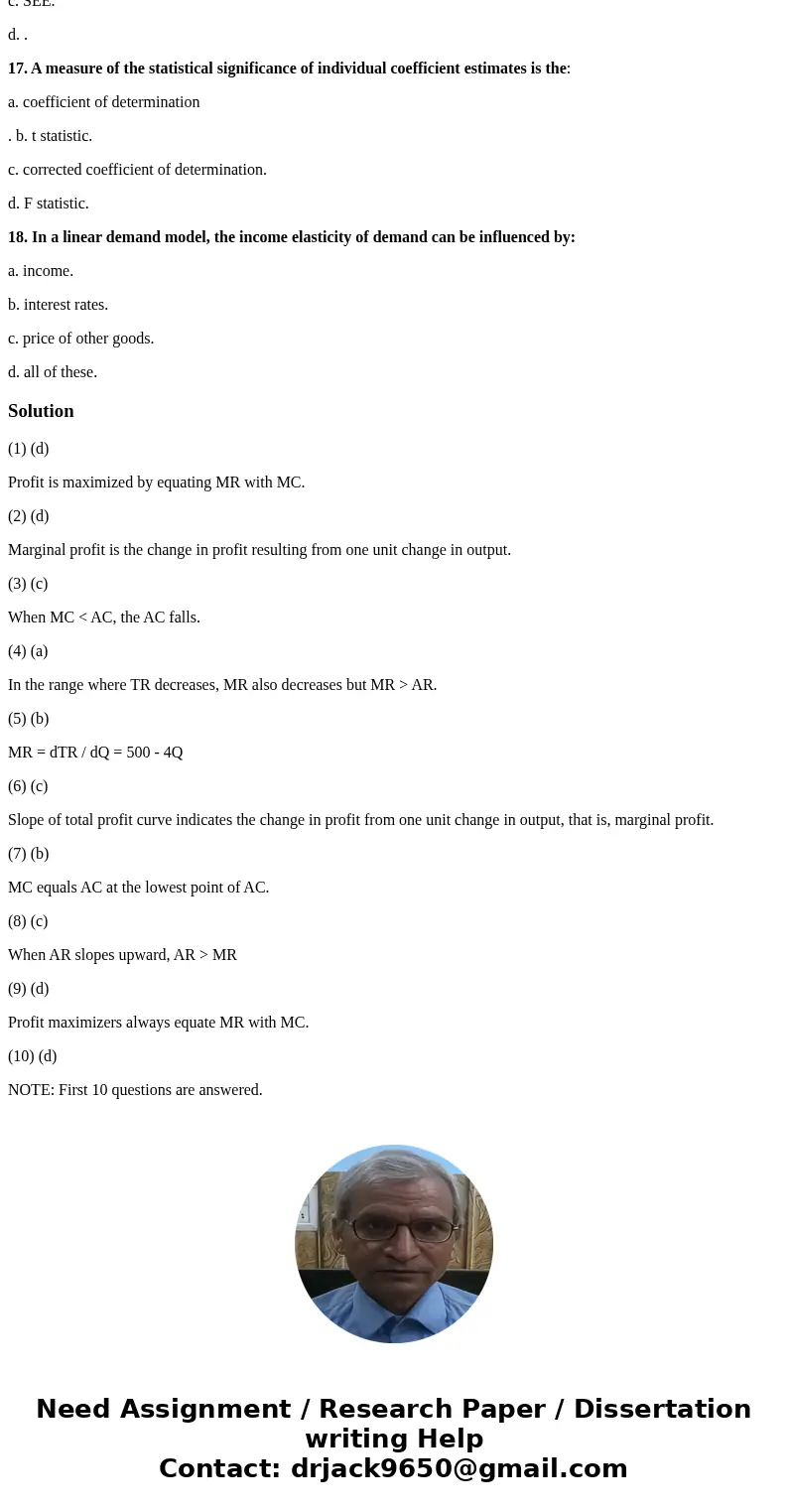1 The profitmaximizing level of output occurs where a margin
1. The profit-maximizing level of output occurs where:
a. marginal cost equals average cost.
b. marginal revenue equals zero.
c. total profit equals zero.
d. marginal cost equals marginal revenue.
2. Marginal profit is:
a. total revenue minus total cost.
b. the change in profit caused by a given managerial decision.
c. the profit earned by the firm over a brief period of time.
d. the change in profit that results from a unitary change in output.
3. Average cost will fall as output expands so long as:
a. marginal revenue is less than average revenue.
b. marginal cost equals zero.
c. marginal cost is less than average cost.
d. fixed costs equal zero. ________________________________________
4. If total revenue falls as output increases, marginal revenue:
a. is greater than average revenue.
b. is greater than marginal cost.
c. is always negative.
d. equals zero.
5. If TR = $500Q - $2Q2:
a. MR = $500 - $2Q
. b. MR = $500 - $4Q.
c. MR = $500Q - $2.
d. MR = $500 - $4.
6. The slope of a total profit curve indicates:
a. an inflection point.
b. average profit at that point.
c. marginal profit at that point.
d. total profit at that point. ________________________________________
7. If marginal cost equals average cost:
a. marginal cost is rising.
b. average cost is minimized.
c. marginal cost is falling.
d. marginal cost always equals zero. _
8. If marginal revenue is less than average revenue, the:
a. total revenue curve is downward sloping
. b. demand curve is downward sloping.
c. average revenue curve is upward sloping.
d. marginal revenue curve is downward sloping. ________________________________________
9. Profit-maximizing firms always:
a. sells at lower prices than revenue-maximizing firms
. b. sells less output than revenue-maximizing firms.
c. sets marginal cost equal to average cost.
d. none of these. ________________________________________
10. At the profit-maximizing activity level:
a. marginal cost is rising
. b. marginal revenue is falling.
c. marginal cost is falling.
d. none of these.
11. An uncertain relation that is true on average is a:
a. statistical relation.
b. deterministic relation.
c. cross-section relation.
d. time-series relation. ________________________________________
12. If the Total Revenues of a firm can be expressed as TR = 30Q – 2.30Q2 and Total Costs as TC = $12 +6Q + .7Q2
a. _________ Determine the profit maximizing quantity, and
b. _________ Amount of Maximum profit
13. A simple regression model necessarily involves:
a. one variable.
b. more than one X variable.
c. more than one Y variable.
d. none of these.
14. In a simple regression model, the correlation coefficient:
a. shows the effect of X on Y.
b. shows the effect of Y on X.
c. is greater than one.
d. is the square root of the coefficient of determination.
15. Holding all else equal, the corrected coefficient of determination rises with:
a. an increase in the number of estimated coefficients.
b. a decrease in sample size.
c. an increase in R2.
d. an increase in the standard error of the estimate. _
16. The percentage of variation in the dependent Y variable explained by all independent X variables as a group, after controlling for sample size and the number of estimated coefficients, is given by:
a. R2.
b. corrected R2.
c. SEE.
d. .
17. A measure of the statistical significance of individual coefficient estimates is the:
a. coefficient of determination
. b. t statistic.
c. corrected coefficient of determination.
d. F statistic.
18. In a linear demand model, the income elasticity of demand can be influenced by:
a. income.
b. interest rates.
c. price of other goods.
d. all of these.
Solution
(1) (d)
Profit is maximized by equating MR with MC.
(2) (d)
Marginal profit is the change in profit resulting from one unit change in output.
(3) (c)
When MC < AC, the AC falls.
(4) (a)
In the range where TR decreases, MR also decreases but MR > AR.
(5) (b)
MR = dTR / dQ = 500 - 4Q
(6) (c)
Slope of total profit curve indicates the change in profit from one unit change in output, that is, marginal profit.
(7) (b)
MC equals AC at the lowest point of AC.
(8) (c)
When AR slopes upward, AR > MR
(9) (d)
Profit maximizers always equate MR with MC.
(10) (d)
NOTE: First 10 questions are answered.




 Homework Sourse
Homework Sourse